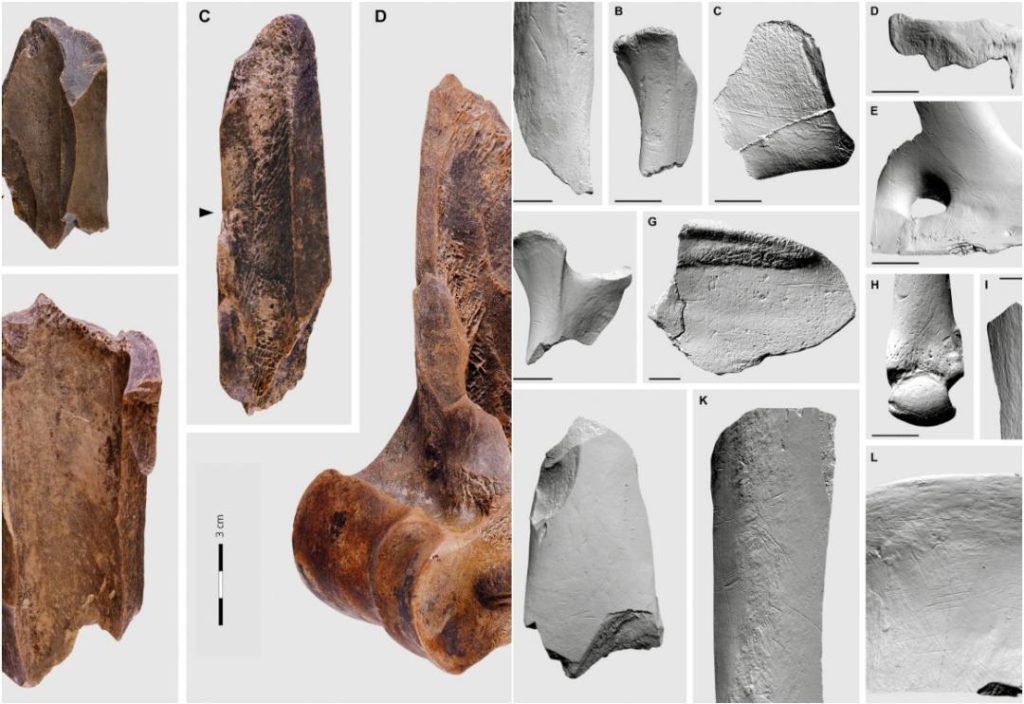
Fat Factories Run by Neanderthals 1,25,000 Years Ago Discovered
In a groundbreaking discovery, archaeologists have uncovered evidence that Neanderthals, our ancient human relatives, were capable of rendering fat from animal bones a staggering 1,25,000 years ago. The remarkable finding, dubbed the “fat factory,” suggests that Neanderthals were more advanced and resourceful than previously thought, and sheds new light on their daily lives and subsistence strategies.
The discovery was made at a site in Neumark-Nord, near Germany’s Leipzig, where archaeologists unearthed a collection of heavily fragmented bones that had been harvested from at least 172 large animals. The bones, which date back to the Middle Paleolithic era, show signs of having been broken into small pieces using stone hammers and then boiled to extract the fat.
According to the researchers, the process of rendering fat from animal bones is a complex and labor-intensive task that requires a high degree of planning and organization. The fact that Neanderthals were able to accomplish this feat so far back in time is a testament to their ingenuity and adaptability.
“This is a remarkable discovery that provides new insights into the daily lives of Neanderthals,” said Dr. Michael Alt, lead author of the study and a researcher at the University of Leipzig. “The fact that they were able to extract fat from animal bones suggests that they were able to exploit a valuable resource that was essential for their survival.”
The discovery of the “fat factory” is also significant because it provides evidence of Neanderthals’ ability to adapt to their environment and make the most of available resources. In the past, researchers have often focused on the hunting and gathering aspects of Neanderthal subsistence, but this new evidence suggests that they were also capable of processing and preserving food to make it last longer.
The process of rendering fat from animal bones is a multi-step process that involves several different techniques. First, the bones are broken into small pieces using stone hammers to release the fat. The fat is then extracted through a process called “hydrolysis,” which involves boiling the bones in water to break down the connective tissue and release the fat.
The researchers believe that the Neanderthals used the extracted fat for a variety of purposes, including cooking and preserving food, as well as for making tools and other essential items. The fat may have also been used for medicinal purposes, such as treating wounds or skin conditions.
The discovery of the “fat factory” is also significant because it provides a new perspective on the Neanderthals’ diet and lifestyle. While we often think of Neanderthals as being primarily carnivores, the fact that they were able to extract fat from animal bones suggests that they may have also been consuming a significant amount of plant-based foods.
“This discovery is a game-changer for our understanding of Neanderthal diets and lifestyles,” said Dr. Alt. “It suggests that they were more adaptable and resourceful than we previously thought, and that they were able to make the most of available resources to survive in a challenging environment.”
The discovery of the “fat factory” is the result of several years of research and excavation by a team of archaeologists and researchers from the University of Leipzig and the German Archaeological Institute. The team used a combination of traditional excavation techniques, as well as modern technologies such as 3D scanning and computer modeling, to analyze the site and reconstruct the ancient process of fat rendering.
The study, which was published in the journal Science Advances, provides a new and detailed understanding of Neanderthal subsistence strategies and daily lives. It also highlights the importance of continued research and excavation in the field of archaeology, and the potential for new discoveries that can shed light on our understanding of human history.
In conclusion, the discovery of the “fat factory” is a significant and groundbreaking finding that provides new insights into the daily lives and subsistence strategies of Neanderthals. It suggests that they were more advanced and resourceful than previously thought, and highlights the importance of continued research and excavation in the field of archaeology.
Source: Alt, M., et al. (2022). Paleolithic fat rendering and the exploitation of animal resources. Science Advances, 8(25), e1257. doi: 10.1126/sciadv.adv1257






